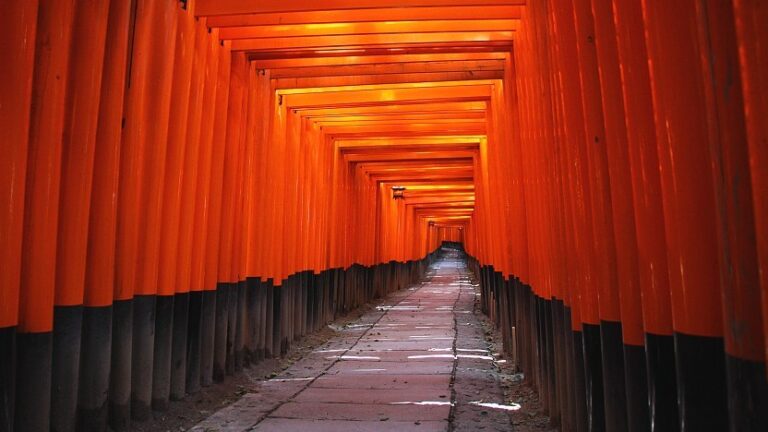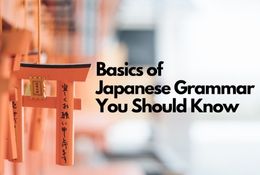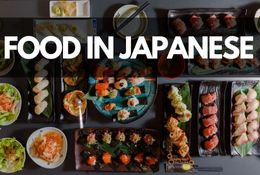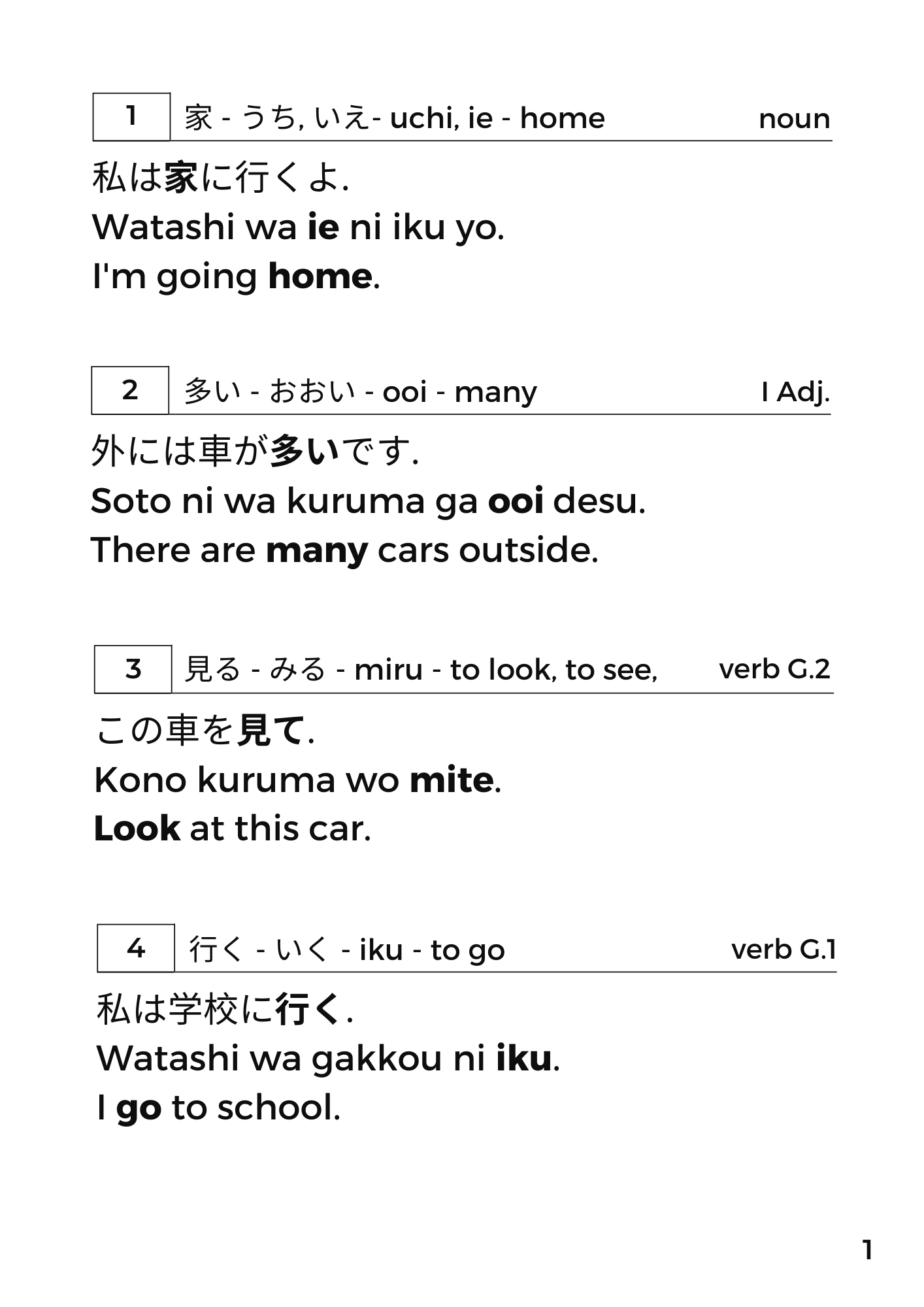
If you’re a lover of Japanese cuisine, then you’ll surely enjoy this lesson about food in Japanese. Have you had the pleasure of trying any Japanese dishes before? You might have come across sushi, which is one of the most well-known Japanese food. Or perhaps you enjoy slurping on a warm bowl of ramen noodles, which has gained popularity in recent years. Whatever Japanese food you favor, one thing is certain: Japanese cuisine is famous for its outstanding flavor and wide range.
Food in Japanese culture is really important. In this article, we will delve into both the culture surrounding Japanese food and all the necessary vocabulary associated with it. Let’s discover amazing Japanese food today!
Here is our article about how you can learn Hiragana
Table of Contents
How to Say Food in Japanese?
If you’re looking to learn some basic Japanese vocabulary about food, you might be wondering how to say “food” in Japanese. The word for “food” is たべもの (tabemono 食べ物). This word is made up of two parts: the verb たべる (taberu 食べる), which means “to eat,” and もの (mono 物), which means “thing.” So, literally translated, tabemono means “things to eat.”
Food culture in Japan is really important. How food is cooked, what is eaten, and how it is served. It’s common to have three meals a day, and many people take great care in preparing their lunch boxes named “bento” in Japanese.
Read more articles about Japanese language and Japan.

Japanese Words for Food
In Japanese, there are various words used to describe food. While “gohan” (ご飯) is a common term among women and children, “meshi” (飯) is considered a more casual and crude way of referring to it.
Don’t worry. It is not a big problem if you use the wrong word when you are speaking to Japanese people. They will correct you or they don’t even notice. But, knowing the right word is the best way to learn Japanese. We listed the most important words about food in Japanese below.
Other articles about Japanese words
Let’s look at some Japanese words about food for everyday use:

Check out our Japanese grammar guide to start learning Japanese.
“Meat” in Japanese
The word for “meat” in Japanese is “niku” (肉). Japan is renowned for producing high-quality meat, particularly its bred beef known as “wagyu” (和牛). Many foreign tourists are impressed by the tenderness and rich flavor of wagyu. Throughout the country, there are various meat-based dishes made with beef, pork, and chicken, all labeled with the kanji character for meat, “niku” (肉/にく).

Here are some other protein sources, or たんぱくげん (tanpaku-gen) in Japanese:

What Are Famous Food Names in Japanese
Japan is famous for its delicious cuisine as we said, and there are many popular foods that are enjoyed by locals and tourists alike. Here are some names of food in japanese:
- Sushi – a dish made with vinegared rice and various types of seafood or vegetables
- Ramen – a noodle soup dish typically made with a meat-based broth and various toppings
- Tempura – a deep-fried battered seafood or vegetable dish.
- Takoyaki – a ball-shaped snack made with octopus, flour, and other ingredients
- Okonomiyaki – a savory pancake made with flour, eggs, shredded cabbage, and a variety of toppings
- Yakitori – skewered and grilled chicken with various seasonings
- Udon – thick wheat flour noodles typically served in a hot broth
- Matcha – a powdered green tea that is often used in desserts such as mochi or ice cream
These are just a few examples of the many delicious foods that Japan has to offer.

What Is Thank You for Food in Japanese?
Thank you for food in Japanese is commonly expressed as ごちそうさまでした “Gochisousama deshita” which is a polite phrase used to show gratitude and appreciation after a meal. It can be translated to “It was a feast” or “Thank you for the meal” in English. This phrase is often said as a group or to the host or chef after enjoying a meal together in Japan. Don’t forget to say that after a meal to show your respect.
“Seafood” in Japanese
The word for “seafood” in Japanese can be expressed as either ぎょかい (gyokai – 魚介) or かいさんぶつ (kaisanbutsu – 海産物). Japan, being an island nation surrounded by various seas and oceans, offers a diverse range of seafood that has become world-renowned. The popular dish of sushi (寿司) is just one example of the many seafood can be found in Japan.
When it comes to naming fish and shellfish, the kanji characters often include the radical さかな (sakana 魚) and むし (mushi 虫), respectively. The word for “fish” is 魚 (sakana). And here are some other seafood-related words commonly used in Japanese.

“Vegetables” in Japanese
If you want to learn some words about food in Japanese, then it is really important for you to learn some vegetables for daily life. The word for “vegetables” in Japanese is やさい (yasai – 野菜). If you go to shopping for vegetables in a Japanese supermarket, you can notice that some of the vegetable names are written in both hiragana and kanji. Also some of them may be unfamiliar to you. But they are essential ingredients in Japanese cuisine, such as tempura and shabu-shabu.

“Fruits” in Japanese
In Japan, fruits are referred to as くだもの (kudamono 果物). Due to the diverse climates across the country, Japan produces a unique range of fruits, from those suited for cold weather to tropical fruits. The Fuji apple is perhaps the most known and popular Japanese fruit since the 1980s. Additionally, you may be surprised to find a variety of かんきつ (kankitsu 柑橘, citrus or orange) and いちご (ichigo 苺, strawberry) in season. Here are some other Japanese words for fruits:

Common Cooking Ingredients in Japanese
When it comes to Japanese cuisine, seasoning and condiments play a crucial role in enhancing the flavors of dishes. In fact, ちょうみりょう (choumiryou – 調味料) refers to the various condiments and seasonings used in Japanese cooking. One of the most important ingredients is だし (dashi – 出汁), a broth that is rich in umami (旨味) and forms the base of many Japanese recipes. Another popular ingredient is みそ (miso – 味噌), a fermented paste that adds a tangy and savory flavor to dishes. Also take a look at the other commonly used Japanese cooking ingredient words below:

Japanese Food Names
There are a lot of important words to memorize for your Japanese food vocabulary. In this section, you will learn the popular Japanese food. These lists of traditional Japanese foods are divided into categories ranging from those found at home to those available at Japanese restaurants.

Japanese Dishes at Home
In Japan, traditional meals are known as わしょく (washoku | 和食), which typically consist of a main dish and several side dishes. The ideal washoku meal is called いちじゅうさんさい (ichiju sansai 一 汁三菜), which means one soup and three side dishes. Along with the main dish, it’s common to serve rice, soup, and pickled vegetables. Here is the list:

Traditional Japanese Cuisine at Japanese Restaurants
The mild, flavorful taste of Japanese food is highly admired. They aren’t big fans of spicy foods. If you haven’t been to Japan yet and are curious about the typical Japanese cuisine, here are some suggestions:

Japan’s Noodle Dishes
Many people, both locals and foreigners, enjoy Japanese noodles! The most important ingredient in making noodles is wheat flour. The following are examples of common noodle types:

What kind of Japanese noodle do you like? Write it to the comments!
Fusion Dishes in Japanese
Over time, European and Asian cuisines influenced much of Japanese cooking, and many fusion menus were created. They like to make their own Japanese versions, such as teriyaki burgers or green tea milkshakes, to adapt to Japanese tastes.
As previously stated, these are known as ようしょく (youshoku | 洋食) and are enjoyed by people of all ages. Here are a few of our favorites:

Japanese Sweets Names
The Japanese words for “sweet foods” おかし (okashi | お菓子), かんみ (kanmi | 甘味), and デザート (dezaato).
Western confectioneries are typically written in katakana with English-based words. Traditional Japanese sweets known as wagashi, on the other hand, go by a variety of names. The most common wagashi is made with sweetened red bean paste, and many of them seem like refined works of art.
Traditional Japanese Sweets
Traditional sweets are known as わがし (wagashi | 和菓子). When making these sweets, seasonal ingredients such as fruits and flowers are frequently used. Here are some of the most popular Japanese candies you should know:

Western Confectionery Food in Japanese
Western confectioneries are known as ようがし (yougashi | 洋菓子). These are a variety of European/Western sweets with a Japanese twist. In Japan, ice cream is a popular dessert. Locals enjoy it as an afternoon snack on a specific day.

Adjectives to Describe Food In Japanese
What does it taste like? Is it tasty? Here’s a short list of adjectives that describe the cuisine’s flavor.
Japanese Adjectives Describing Taste
Here’s how you can explain that how you find the flavor of a food:

Adjectives Describing Food Temperature
How do you like your beverages? There are also cold noodles available. Here are some words that describe temperature:

Adjectives Describing Food Textures
Japanese cuisine will always be one of the most popular topics. Use these words to describe your amazing lunch or dinner:

If you want to learn more about Japanese words, we have a category dedicated to it.
FAQs About Food in Japanese
Q: What is the difference between sushi and sashimi?
Sushi is a dish that typically consists of vinegared rice topped with various ingredients, including raw fish, vegetables, and egg. Sashimi, on the other hand, is simply thin slices of raw fish or seafood served without rice. So, the main difference between the two is that sushi includes rice, while sashimi does not.
Q: What is the most popular Japanese dish?
Japanese cuisine is known for its many delectable dishes, and among them, sushi reigns supreme as the most popular and recognized. This mouthwatering delicacy can be found on menus across the globe, from Tokyo to New York City. One of the reasons for its immense popularity is its distinct blend of flavors and textures that make for a truly unique dining experience. And let’s not forget about the aesthetic presentation, which is just as important as the taste!
Q: Is Japanese cuisine healthy?
Japanese cuisine is generally considered to be healthy due to its emphasis on fresh, seasonal ingredients, minimal use of oil and fats, and focus on grilled or steamed dishes. Traditional Japanese meals also tend to be well-balanced, with a variety of vegetables, seafood, and lean meats. However, like any cuisine, there are also less healthy options available, such as fried dishes or those high in sodium.
Q: What is the traditional Japanese breakfast like?
A traditional Japanese breakfast typically consists of rice, miso soup, grilled fish, and various side dishes such as pickles, tamagoyaki (rolled omelette), and natto (fermented soybeans). It is a healthy and balanced meal that provides energy and nutrients to start the day.
Q: What are some popular Japanese drinks?
Some popular Japanese drinks include sake, shochu, green tea, matcha, and Ramune (a carbonated soft drink). Other popular alcoholic beverages include beer and whiskey.
Q: Is it true that Japanese people eat a lot of raw fish?
Yes, it is true. Japanese people eat a lot of raw fish, but that is just one aspect of their cuisine. Japanese cuisine is diverse and includes many cooked dishes as well. Sushi and sashimi are popular raw fish dishes, but there are also so many cooked fish dishes such as teriyaki and tempura. Additionally, Japanese cuisine includes a variety of vegetables, rice, noodles, and soups.
Q: What is the etiquette for eating in Japanese culture?
In Japanese culture, it is important to say いただきます “itadakimasu” before eating to express gratitude for the food. It is also considered impolite to leave food on your plate or to use your chopsticks to pass food directly to someone else’s chopsticks. Slurping noodles is acceptable and even encouraged as a sign of enjoying the food.
Learn more about Japanese Cuisine
I hope you’ve enjoyed our article about food in Japanese. You won’t get lost in Japanese supermarkets or have trouble finding a local Japanese restaurant once you’ve learned some Japanese words for food. We know how many countries have Japanese restaurants because their cuisine is delicious! By learning about Japanese food, you’re also learning about Japanese culture. So, why not discover your new favorite Japanese foods?








